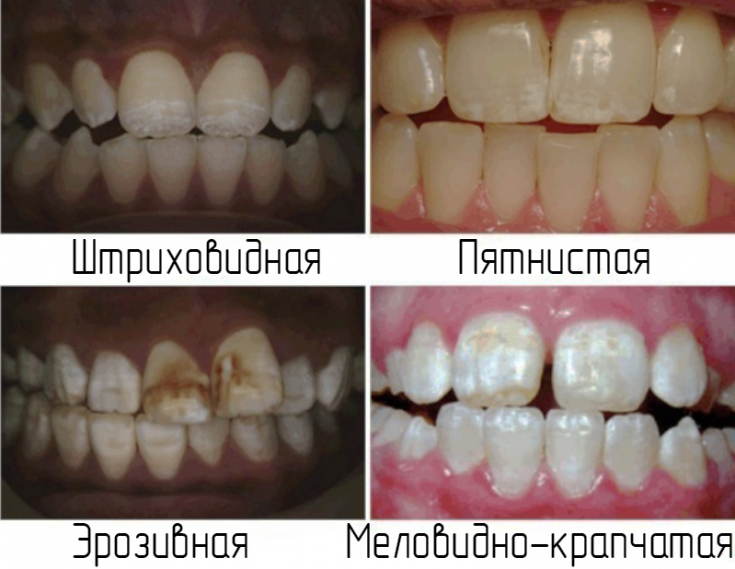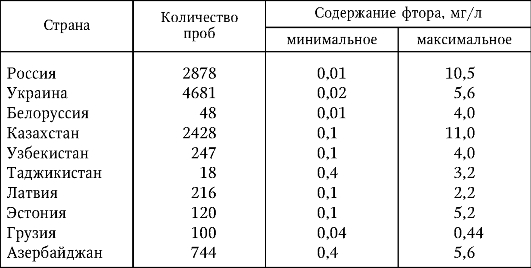Endemic Fluorosis – a common disease in many areas with high levels of fluoride in the water. Fluorosis is common in the mountainous regions of the Arab and Central Asian countries, but also occurs in the Baltic states, Ukraine, and the European part of Russia.
Main sources of high fluoride levels: water, food, air in industrial cities and excessive use of toothpaste.
However, drinking water is the most important source of chemical elements. On estet-portal.com read about the types, symptoms and prevention of fluorosis.
Features of the course of fluorosis: clinical picture by stages
Most often, fluorosis develops in childhood – during the formation of bone tissue and its mineralization. However, when the fluoride level exceeds 6 mg/l, the disease can affect the already formed tooth enamel in adults.
Normally, the daily dose of fluoride for an adult should not exceed 4 mg: 0.7-1.5 mg/l in drinking water and up to 2-2.5 mg/l in food.
Depending on the area and nature of the lesion, the disease is divided into several stages.

According to the WHO classification, fluorosis is divided into five degrees according to the severity of the process:
I. Very light – the enamel is practically unchanged.
II. Light – the appearance of white stripes and small spots on the enamel (up to 25% of the area).
III. Moderate – distribution of pigmented spots over the area of the crown (up to 50%).
IV. Medium severity – the entire crown is mottled, the enamel becomes matte, and the pigmentation becomes yellow or brown.
V. Heavy – partial destruction of the enamel and the appearance of erosions and pits.
If the fluorine content is slightly exceeded, only the incisors are affected, with a large – all teeth
Varieties of fluorosis forms: from small strokes to extensive erosions
Fluorosis is characterized by common symptoms for all forms of pathology: the disease begins with the appearance of mottling on the enamel, which becomes more transparent and changes color to yellowish-brown. It also increases the sensitivity of the teeth to changes in temperature and acidic environment, in severe cases – destruction of dental tissue.
The following forms of fluorosis are distinguished:
• dashed (white stripes of Gunther-Schreger and Ritzius lines are expressed);
• spotted (chalky spots);
• chalky mottled (spots of brown);
• erosive (pronounced pigmentation, resorptive processes, exposure of dentin).The pathogenesis of fluorosis is based on the destruction of hard dental tissue with areas of hypo- and hypermineralization.
Characteristic fluorescent spots – These are deposits of calcium fluoride on tooth enamel. Fluorine reduces the activity of alkaline phosphatase in enameloblasts, which disrupts the processes of mineralization.
The form of fluorosis does not change throughout life depending on further saturation with fluorine.
Read also:Fluorine in toothpaste: benefits and harms to the body
Prevention of fluorosis: how to prevent the development of the disease
It is impossible to fully provide the population of an endemic area with fluorine-free water, but there are still ways to prevent the spread of the disease. Prevention of fluorosis consists in replacing the source of drinking water and applying methods to purify it from an excess of a toxic element.
Currently allocated:
 • precipitation methods (using calcium, magnesium and aluminum salts);
• precipitation methods (using calcium, magnesium and aluminum salts);
• electrocoagulation (aluminum electrolysis);
• membrane methods (electrodialysis, nanofiltration, reverse osmosis).Regarding early prevention of fluorosis in children: early introduction of complementary foods and artificial feeding should be avoided.It is necessary to observe the daily fluoride content in the diet and limit the intake of foods containing fluoride (sea fish, spinach, animal fats). Additionally, vitamins C, D and calcium gluconate are administered, which significantly reduce the manifestations of fluorosis.
You may also be interested in:
Advantages and disadvantages of different methods of teeth whitening







Add a comment